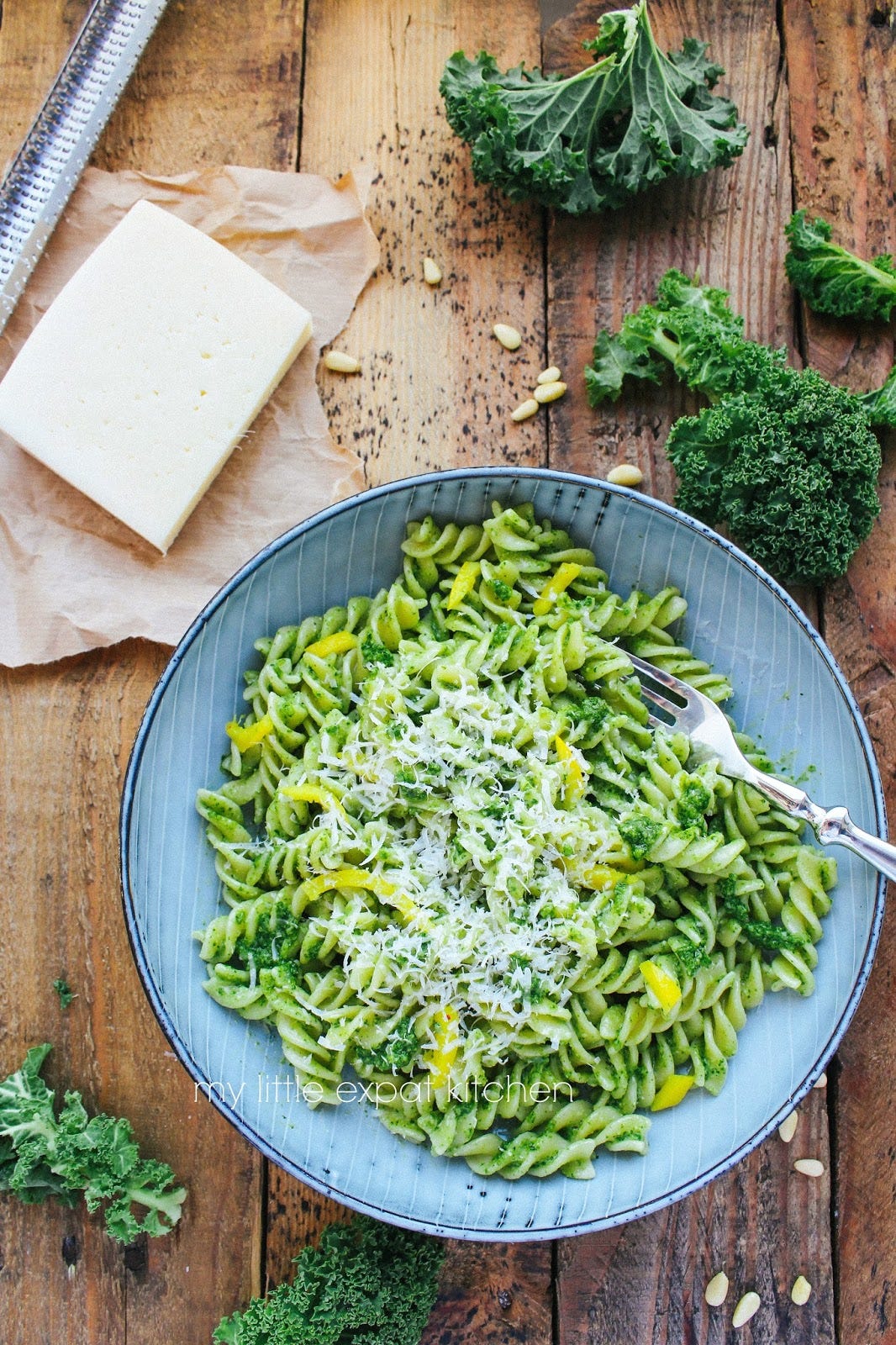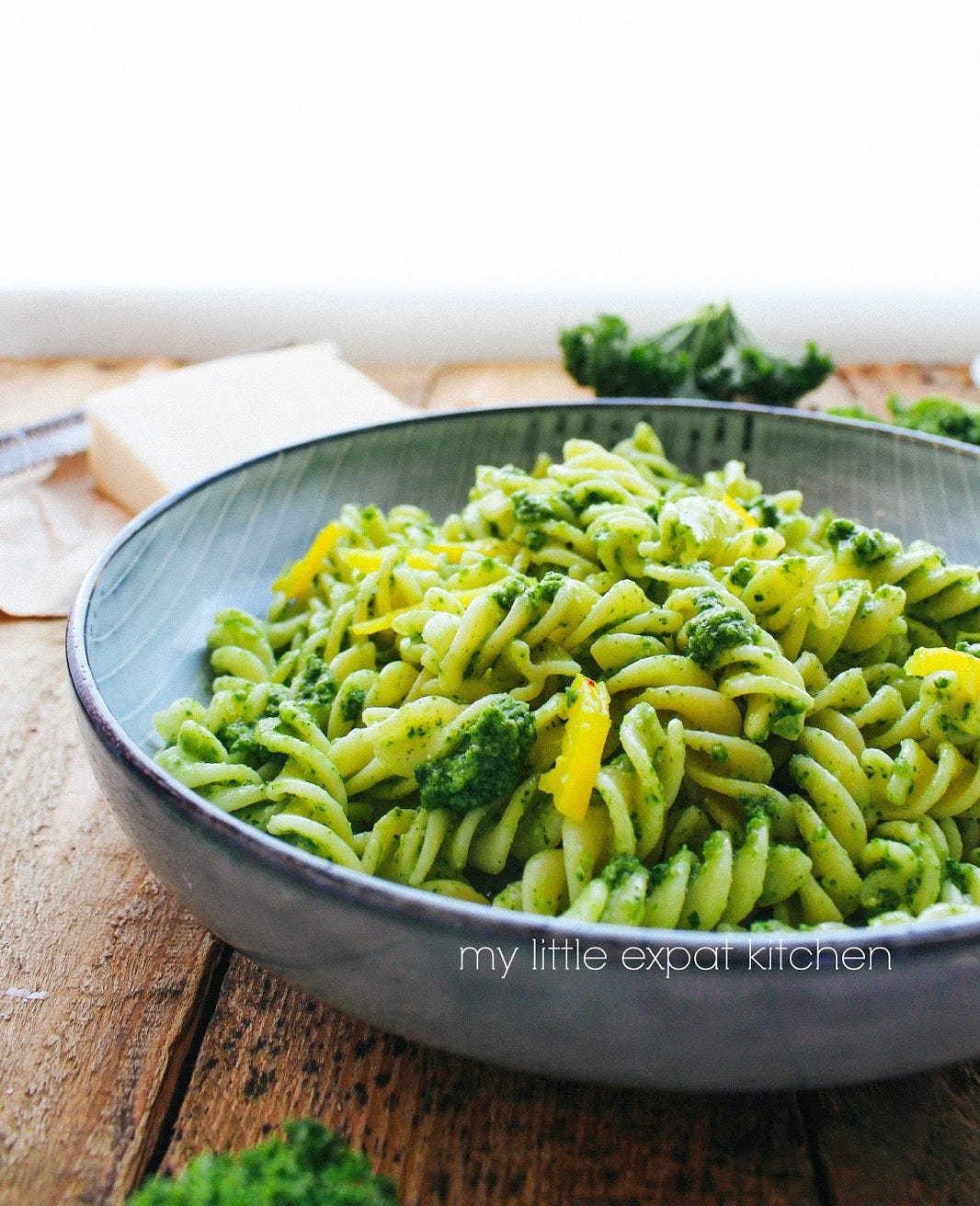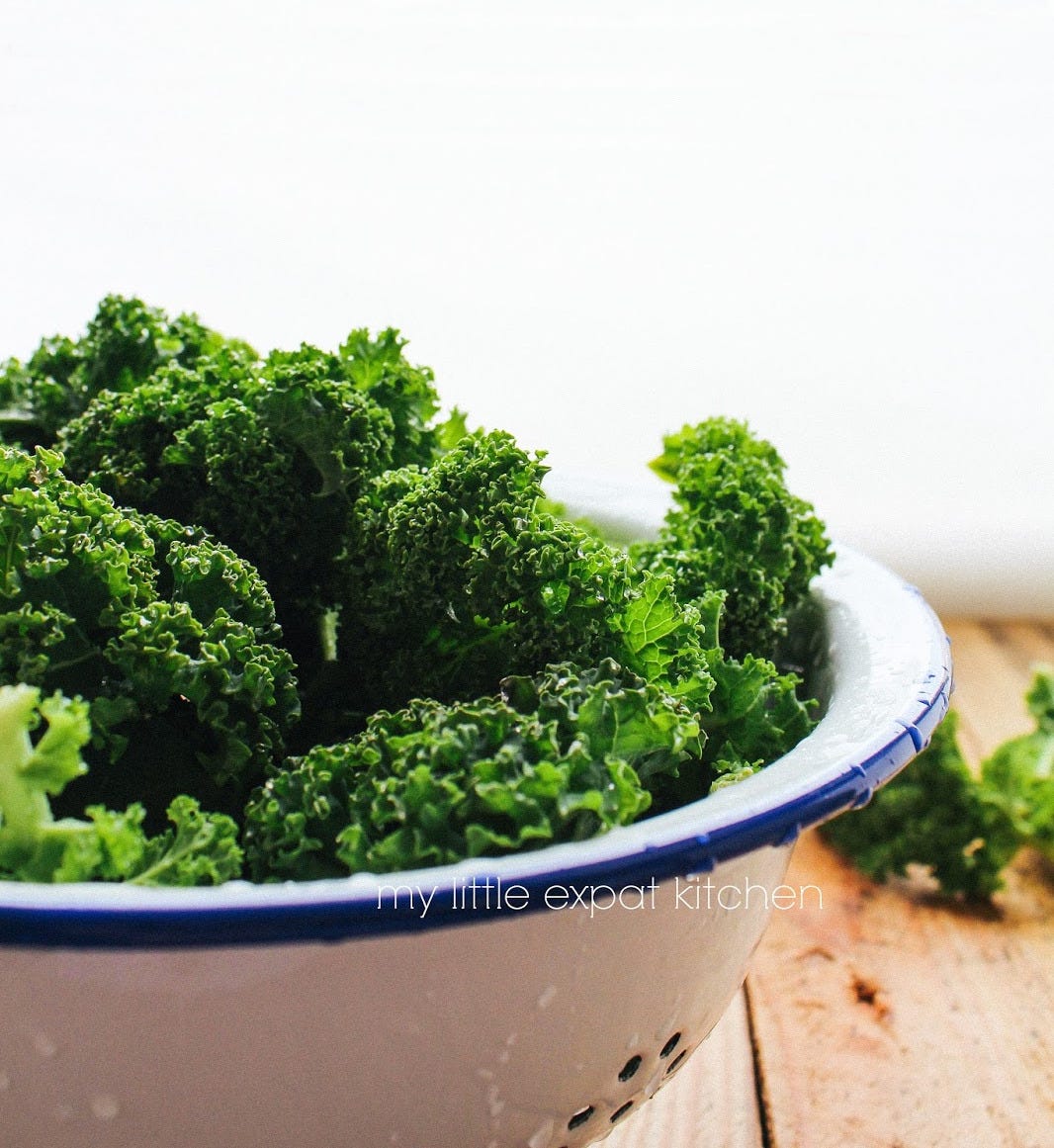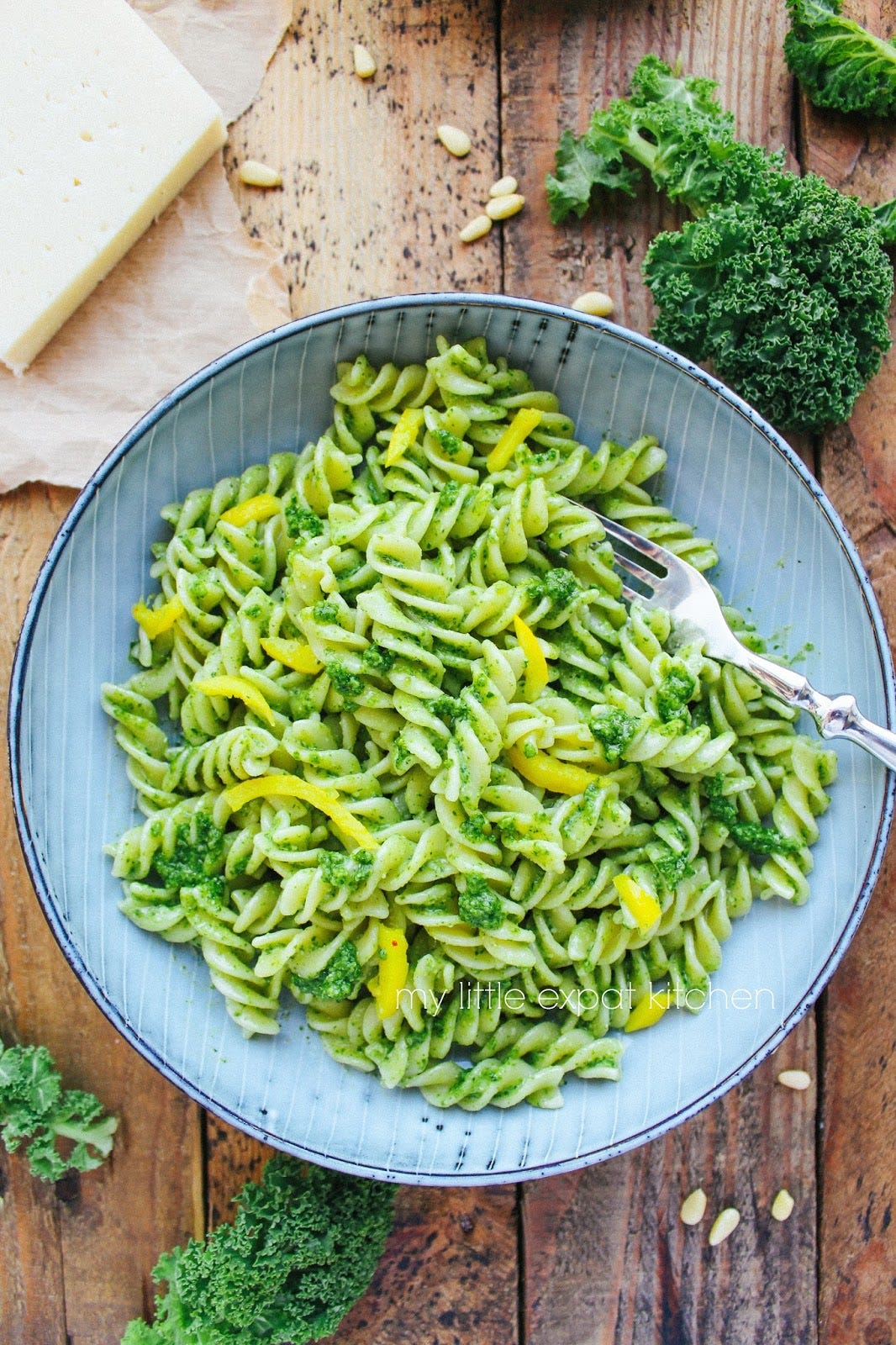Kale and fresh mint pesto fusilli
With Greek Kefalotyri cheese and preserved lemon - A simple yet deeply satisfying, hearty and lively dish
Published originally on my blog on 11 May 2017
Signs of spring are evident all around me with colorful flowers and lush green trees lining the streets of my city.
Green things are also popping up at all the farmer’s markets.
Vegetables, fruits, edible flowers, all overwhelmingly pretty and delicious to eat and to look at.
Kale, the deepest green of them all, is what caught my eye the other day. I grabbed it and couldn’t wait to cook with it because you know how much I love it, and as it will be soon out of season, there’s not a moment to waste.
My mind was filled with ideas of what to make but S convinced me to pair it with pasta. At first I thought about sautéing it in olive oil with garlic and a little lemon and adding it to my pasta, but then pesto came to mind.
I am not a fan of basil so I never make the classic pesto but a kale pesto? I was definitely game for that.
A simple yet deeply satisfying, hearty and lively dish was born. Apart from the usual pesto suspects of garlic, olive oil and pine nuts, I added some fresh mint together with the kale which gave it vibrancy and freshness.
I used Greek Kefalotyri cheese —which fortunately I had on hand from a recent visit back home to Greece— not only for a generous grating on top of the pasta but in the pesto as well. Its creamy quality gave a rich flavor and savoriness to my pasta and made the dish even more enjoyable.
The pesto was fresh, aromatic and salty with both sweet and bitter notes from the kale, and I added a few finely chopped pieces of my homemade preserved lemon to the pasta that added acidity and balanced the earthy and herby flavors of the kale pesto.
Kale and mint pesto fusilli with Greek Kefalotyri cheese and preserved lemon
You don’t need much preserved lemon, just enough to enliven the pasta and add another flavor dimension to it. You can add lemon zest instead if you don’t have any preserved lemon on hand.
You can use pecorino romano instead of Greek Kefalotyri in case you can’t source it.












